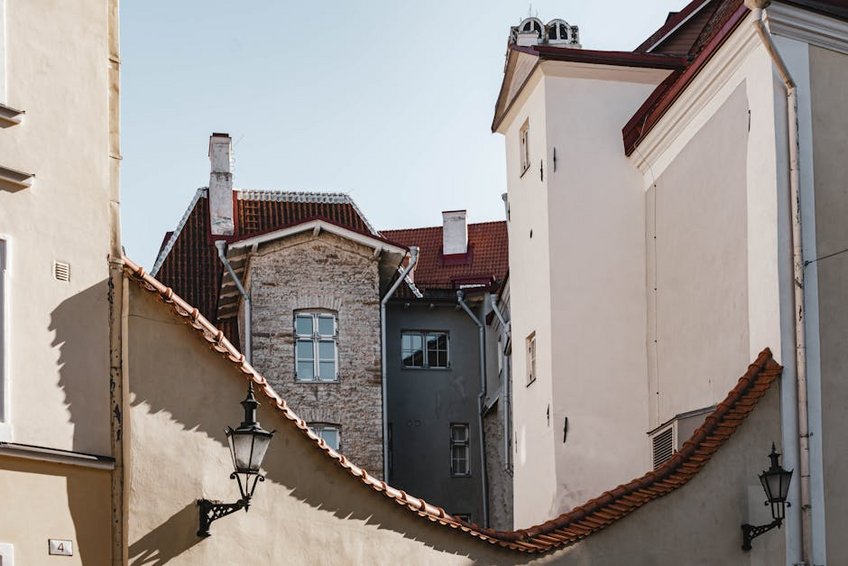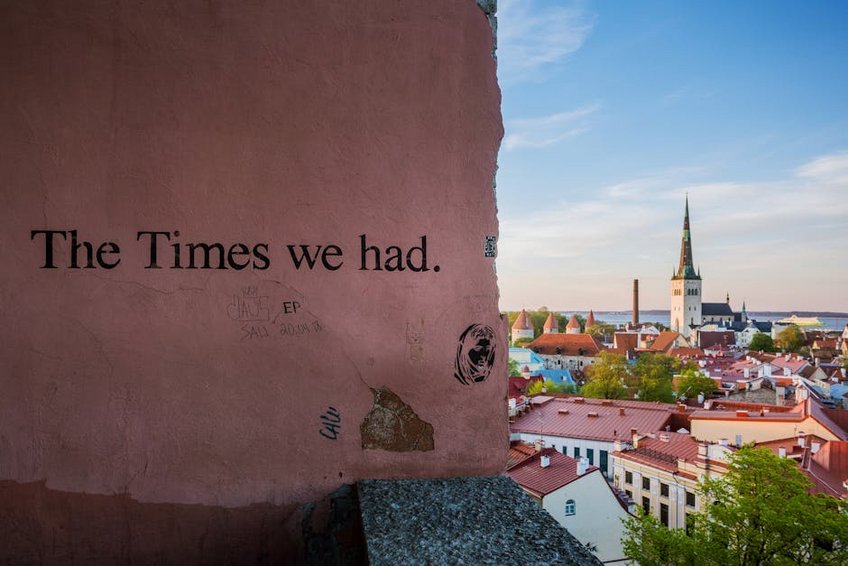Tallinn Medieval Town – Your Ultimate Travel Guide
Stepping into Tallinn Medieval Town feels like traveling through a time portal to the 13th century, where cobblestone streets whisper stories of Hanseatic merchants and medieval knights. This UNESCO World Heritage site, perfectly preserved within its ancient city walls, offers one of Europe’s most authentic historical experiences just waiting for you to discover. As you wander through the labyrinthine alleyways, you’ll encounter Gothic spires reaching for the sky, charming merchant houses painted in warm hues, and hidden courtyards that transport you to another era. The magic of Tallinn Medieval Town lies not just in its architectural beauty but in the palpable sense of history that permeates every stone and every corner. Whether you’re a history enthusiast, a photography lover, or simply seeking a unique European getaway, this Estonian gem promises an unforgettable journey back in time that will capture your imagination and leave you with memories to cherish forever.
Tallinn Medieval Town Essential Information – What Every Traveler Should Know
Before you embark on your adventure to Tallinn Medieval Town, understanding its historical context and practical details will significantly enhance your experience. This magnificent medieval enclave, known locally as Tallinna vanalinn, represents one of Northern Europe’s best-preserved medieval urban centers, with its origins dating back to the 13th century. The town divides naturally into two sections: Toompea Hill, the upper town where nobility and clergy resided, and the lower town where merchants and craftsmen lived and worked. This division still feels palpable as you explore, with each area offering distinct architectural styles and atmospheric qualities. The entire medieval core spans approximately 113 hectares, surrounded by remarkably intact defensive walls and towers that create a magical enclosed world where time seems to have stood still for centuries.
Historical Significance and UNESCO Status
- Tallinn Medieval Town gained UNESCO World Heritage status in 1997 due to its exceptional preservation and representation of medieval Northern European architecture
- The settlement originated as a trading post at the crossroads of European trade routes, flourishing during the Hanseatic League era from the 13th to 16th centuries
- Remarkably, approximately 80% of the original medieval structures remain intact despite numerous wars and conflicts throughout history
- Budget travelers can manage with 40-60 EUR per day by staying in hostels outside the medieval walls, eating at local cafeterias, and focusing on free attractions like walking the city walls and exploring streets
- Mid-range travelers should budget 80-120 EUR daily for comfortable hotels within walking distance, restaurant meals, museum entries, and occasional guided tours
- Luxury experiences range from 150-300+ EUR per day featuring boutique hotels within the medieval center, fine dining at medieval restaurants, private guides, and special experiences like medieval banquet evenings
- Estonian Official Tourism Website – Tallinn Medieval Old Town
- UNESCO World Heritage Centre – Historic Centre of Tallinn
Geographical Layout and Navigation
Navigating Tallinn Medieval Town presents a delightful challenge with its winding, cobblestone streets that follow their original medieval patterns rather than modern grid systems. The entire old town measures approximately 1.2 kilometers from north to south and 0.9 kilometers from east to west, making it perfectly walkable despite its maze-like quality. You’ll find the area enclosed by 1.9 kilometers of original defensive walls, with 20 surviving towers out of the original 46 that once protected the city. The two main squares—Town Hall Square and Freedom Square—serve as excellent orientation points, while the three primary streets (Pikk, Lai, and Vene) function as the main arteries connecting different sections. Don’t worry about getting lost though; part of the charm involves discovering hidden courtyards and unexpected vistas around every corner.

Tallinn Medieval Town Planning Your Trip – Seasons, Budget, and Preparation
Planning your visit to Tallinn Medieval Town requires consideration of seasonal variations, budget requirements, and necessary preparations to ensure a smooth and enjoyable experience. The medieval town offers dramatically different experiences throughout the year, from snow-dusted fairy-tale winters to vibrant summer evenings filled with outdoor cafes and cultural events. Your budget will depend largely on travel style, with options ranging from budget-friendly hostels to luxury hotels within the ancient walls. Practical preparation involves understanding visa requirements (most Western travelers don’t need one for short stays), currency (Estonia uses the Euro), and language considerations (English widely spoken, but learning a few Estonian phrases enhances the experience). The compact nature of the medieval center means you can comfortably explore the highlights in 2-3 days, though history enthusiasts might want to allow extra time for museums and deeper exploration.
Best Time to Visit Tallinn Medieval Town
Choosing when to visit Tallinn Medieval Town significantly impacts your experience, with each season offering distinct advantages. Summer months (June-August) provide the warmest weather, with temperatures averaging 18-22°C (64-72°F), long daylight hours (up to 19 hours of light in June), and numerous festivals and outdoor events. However, this is also the peak tourist season with larger crowds and higher prices. Spring (April-May) and autumn (September-October) offer milder weather, fewer visitors, and beautiful seasonal colors—spring blossoms or autumn foliage against the medieval backdrop create spectacular photo opportunities. Winter (November-March) transforms the medieval town into a magical winter wonderland, especially during the Christmas market season, though temperatures can drop to -5°C to -15°C (23°F to 5°F) and daylight hours are limited. For balanced weather and crowds, late May or early September often provide the ideal conditions.
Budget Planning and Costs for Tallinn Medieval Town
Essential Preparation Checklist
Preparing for your Tallinn Medieval Town adventure involves both practical and experiential considerations to maximize your enjoyment. Ensure your passport is valid for at least three months beyond your planned departure date (for non-EU visitors), though most Western travelers enjoy visa-free access for up to 90 days. Pack comfortable walking shoes with good grip—the cobblestone streets, while charming, can be challenging in smooth-soled footwear. Bring layers regardless of season, as weather can change quickly and indoor heating might be intense during colder months. Download offline maps of the medieval town since GPS can be unreliable among the narrow streets and tall buildings. Research opening times for specific attractions, as some smaller museums might have limited hours, especially outside peak season. Finally, consider reading some historical background to appreciate the context of what you’ll be experiencing.
Tallinn Medieval Town Top Attractions and Activities – Must-See Sights and Hidden Gems
Exploring Tallinn Medieval Town reveals a treasure trove of historical attractions, cultural experiences, and hidden corners that together create an immersive journey through time. The town boasts an impressive concentration of significant landmarks within its compact area, including one of Europe’s oldest functioning town halls, numerous medieval churches, and the continent’s oldest pharmacy still operating in its original location. Beyond the famous sights, the real magic often lies in spontaneous discoveries—a hidden courtyard filled with artisan workshops, a quiet alleyway offering unexpected views, or a basement restaurant serving traditional medieval fare. Your exploration should balance structured visits to major attractions with ample time for simply wandering and absorbing the atmosphere that makes this medieval enclave so special. Whether you’re climbing ancient towers for panoramic views, exploring underground tunnels, or simply sitting in a centuries-old square watching the world go by, every moment in Tallinn Medieval Town feels connected to its rich historical tapestry.
Must-See Highlights in Tallinn Medieval Town
Your Tallinn Medieval Town itinerary should include several iconic landmarks that define the medieval experience. Town Hall Square (Raekoja plats) serves as the vibrant heart of the lower town, surrounded by colorful merchant houses and dominated by the 15th-century Town Hall—the only intact Gothic town hall in Northern Europe. Climb the Town Hall tower for breathtaking views over the red-tiled roofs and spires of the medieval center. Toompea Castle, now housing the Estonian Parliament, offers a fascinating blend of medieval and modern governance, while Alexander Nevsky Cathedral represents Russian Orthodox splendor with its onion domes and elaborate iconostasis. St. Olaf’s Church, once the world’s tallest building in the 16th century, provides another spectacular viewing platform after climbing its 258 steps. The medieval city walls and towers, particularly the aptly named “Fat Margaret” and “Kiek in de Kök” towers, offer insights into the town’s defensive history and provide excellent vantage points for photography.
Hidden Gems and Local Favorites
Beyond the main attractions, Tallinn Medieval Town conceals numerous lesser-known treasures that offer more intimate experiences away from the crowds. The Masters’ Courtyard (Meistrite hoov) near Vene Street provides a peaceful oasis where local artisans create and sell traditional crafts in a picturesque setting perfect for coffee breaks. The Dominican Monastery cloisters offer a serene escape with their medieval architecture and peaceful atmosphere, often hosting classical concerts that enhance the historical ambiance. For a unique perspective, explore the Bastion Tunnels beneath the town walls, which once formed part of the defensive system and now host historical exhibitions. St. Catherine’s Passage features open-air workshops where glassblowers, hatmakers, and ceramicists practice traditional crafts much as their medieval predecessors did. For the best local experience, visit during the early morning or evening when day-trippers have departed, and the medieval streets regain their timeless tranquility.
Tallinn Medieval Town Practical Travel Information – Transportation, Accommodation, and Navigation
Navigating the practical aspects of visiting Tallinn Medieval Town ensures a smooth and enjoyable experience from arrival to departure. The medieval center’s compact size and pedestrian-friendly layout make exploration primarily a walking activity, though understanding transportation options to and from the area is essential. Accommodation ranges from historic hotels within the ancient walls to modern options just outside, each offering different advantages in terms of authenticity, convenience, and price. Dining options span from casual medieval-themed taverns to fine dining restaurants, while shopping opportunities include both tourist-oriented souvenirs and authentic Estonian crafts. Despite its historical appearance, Tallinn Medieval Town offers all modern amenities, including excellent WiFi coverage, accessible facilities at major attractions, and English-speaking staff at most establishments, making it comfortable for international visitors while maintaining its medieval charm.
| Category | Options/Features | Price Range (USD) |
|---|---|---|
| Accommodation | Historic hotels within walls, modern hotels outside, apartments | $80-$400/night |
| Dining | Medieval taverns, modern Estonian cuisine, international options | $15-$60/meal |
| Attractions | Museum entries, tower climbs, guided tours | $5-$20/attraction |
| Transport | Taxi from airport, public transport, walking | $5-$25/transfer |


